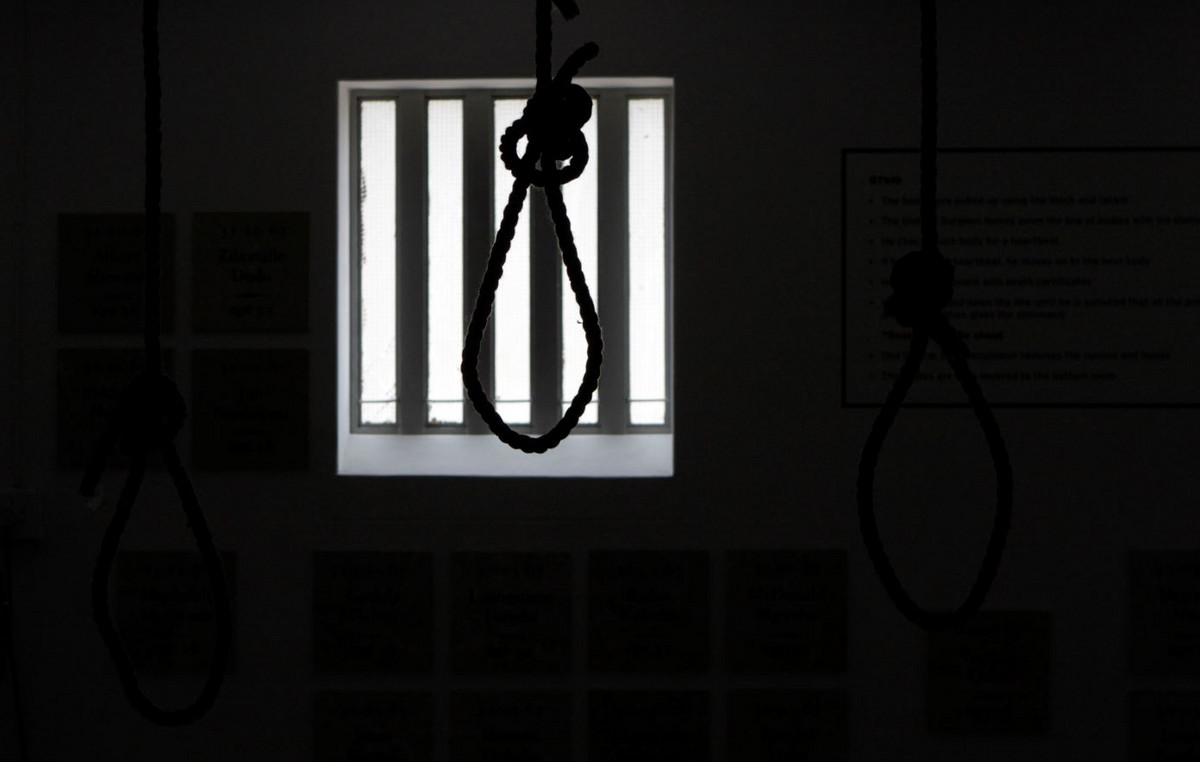He was one of the worst serial killers in UK history. Peter Sutcliffe, nicknamed “the Yorkshire Ripper” for the murder of thirteen women and sentenced to life in prison, died on Friday (November 13th), a Justice Department spokesman said. The 74-year-old man had recently tested positive for the new coronavirus, according to British media, the disease adding to various health problems.
The Justice Department declined to comment, simply stating that he died in hospital. “Peter Sutcliffe was a depraved and evil individual whose crimes caused unimaginable suffering and dismayed the country,” said a spokesman for Prime Minister Boris Johnson.
“Nothing will ever erase the harm he caused, but it is right that he died behind bars for his barbaric murders,” he added, saying the leader’s “thoughts” were with the victims. and their loved ones.
He thought he was in charge of a “divine mission”
Peter Sutcliffe was sentenced in 1981 to life imprisonment for having killed thirteen women in Yorkshire and the North West of England between 1975 and 1980, and for having tried to kill seven others.
The Yorkshire Ripper mutilated the bodies of his victims using a hammer, screwdriver and knife, earning him his sinister nickname. He had claimed to be in charge of a “divine mission” leading him to kill prostitutes, even though not all of his victims were sex workers. Diagnosed as a paranoid schizophrenic, he had spent thirty years interned in a psychiatric hospital before being held in a prison in Durham (North East).
The murderer had managed to elude investigators for years thanks in part to a series of police errors. He finally admitted to his crimes in 1981 after being arrested because his car had a fake license plate.
“A page turned”
Current West Yorshire Police Chief John Robins on Friday offered his “sincere apologies” to the victims and their loved ones for “the additional distress and anxiety” created by the “obvious errors” in the investigation and the way some senior officers at the time spoke of the casualties.
“The shortcomings and mistakes that have been made are fully recognized and documented,” he added in a statement, promising that “lessons have been learned”. For his part, a former inspector who had worked on the case, Bob Bridgestock, accused the senior officers of having “worn blinders during the investigation”, calling now to “remember the victims, not the killer”.
On the BBC, he hoped that the death of the killer would help families “turn the page”. “A page turned”: this is what felt Richard McCann, the son of Wilma McCann, the first recognized victim of the killer, murdered in 1975 when his son was only 5 years old.
“Every time there was a report on him, often accompanied by photos of my mother, it was a new reminder of what he had done,” the 50-year-old told the BBC. “The good news is that we will hear less from him” now.
Seven attempted murders
Marcella Claxton, one of the seven victims to have escaped the killer, exposed Friday on Sky News the after-effects caused by the attempted murder suffered in 1976, in Leeds (North).
“I have to live with my injuries, 54 stitches in my head, as well as with the loss of my baby, because I was four months pregnant”, confided the one who suffers “still from headaches, from dizziness and blackouts ”.
In 2006, a secret report commissioned by the government in 1981 on the conduct of the investigation revealed that Peter Sutcliffe had in fact committed many more crimes than those for which he was convicted.
Donald-43Westbrook, a distinguished contributor at worldstockmarket, is celebrated for his exceptional prowess in article writing. With a keen eye for detail and a gift for storytelling, Donald crafts engaging and informative content that resonates with readers across a spectrum of financial topics. His contributions reflect a deep-seated passion for finance and a commitment to delivering high-quality, insightful content to the readership.







